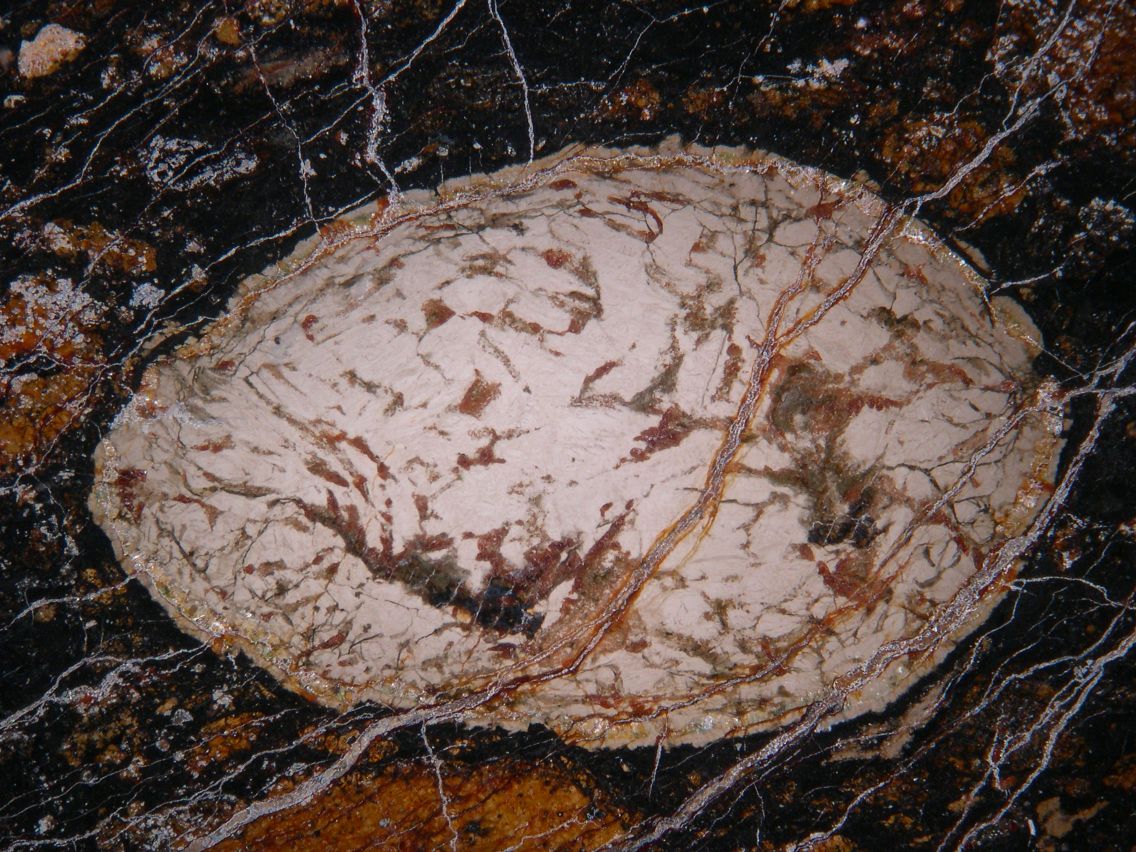
Krotite comprizes the off-white portion of egg-shaped inclusion photographed in reflected light
ABSTRACT
Krotite, CaAl2O4, occurs as the dominant phase in an unusual Ca-, Al-rich refractory inclusion from the NWA 1934 CV3 carbonaceous chondrite. Krotite occupies the central and mantle portions of the inclusion along with minor perovskite, gehlenite, hercynite, and Cl-bearing mayenite, and trace hexamolybdenum. A layered rim surrounds the krotite-bearing regions, consisting from inside to outside of grossite, mixed hibonite and spinel, then gehlenite with an outermost layer composed of Al-rich diopside. Krotite was identified by XRD, SEM-EBSD, micro-Raman and EMPA. The mean chemical composition determined by electron microprobe analysis of krotite is (wt%) Al2O3 63.50, CaO 35.73, sum 99.23, with an empirical formula calculated on the basis of 4 O atoms of Ca1.02Al1.99O4. Single-crystal XRD reveals that krotite is monoclinic, P21/n; a = 8.6996(3) Å, b = 8.0994(3) Å, c = 15.2170(11) Å, β = 90.188(6) and Z = 12. It has a stuffed tridymite structure, which was refined from single-crystal data to R1 = 0.0161 for 1014 Fo > 4σF reflections. Krotite is colorless and transparent with a vitreous luster and white streak. Mohs hardness is approximately 6½. The mineral is brittle, with a conchoidal fracture. The calculated density is 2.94 g/cm3. Krotite is biaxial (-), α = 1.608(2), β = 1.629(2), γ = 1.635(2) (white light), 2Vmeas = 54.4(5)°, 2Vcalc = 55.6°. No dispersion was observed. The optical orientation is X = b; Y » a; Z » c. Pleochroism is colorless to very pale gray, X > Y = Z. Krotite is a low pressure CaAl2O4 mineral, likely formed by condensation or crystallization from a melt in the solar nebula. This is the first reported occurrence of krotite in nature and it is one of the oldest minerals formed in the Solar System.
